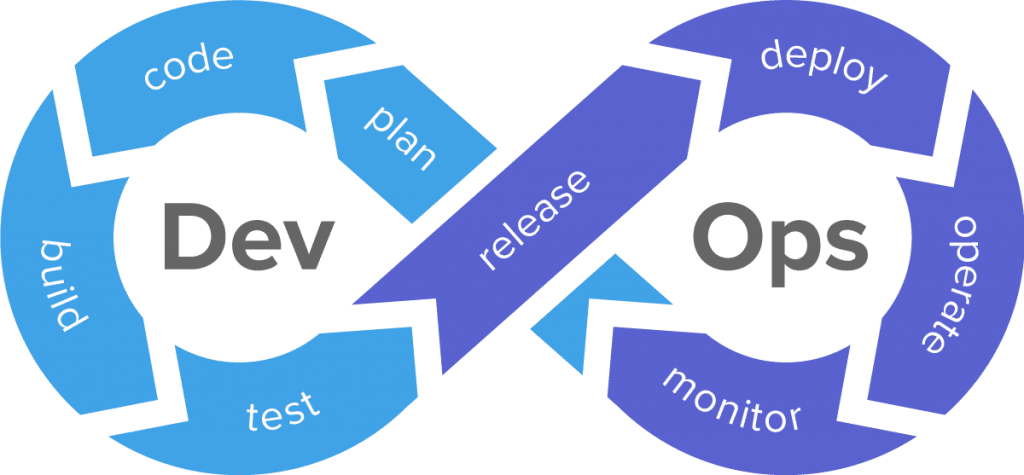7 Ways To Use a Docker Registry in Your Cloud-native Workflow 6 Jul 2022 3:33 AM (2 years ago)

If you’re using containers in your workflow, then you need a Docker registry. A Docker registry is a place where you can store and manage your Docker images.
Docker registries can be public or private. The Docker Hub is the best-known example of a public Docker registry, but there are many others, such as quay.io and gcr.io. If you want more control over your Docker images, then you can create your own private Docker registry using tools like Docker Trusted Registry (DTR) or Registry 2.0.
Docker registries are an important part of the DevOps toolchain and are used by millions of people every day. If you’re using Docker containers in your workflow, then you’re probably already using a Docker registry.
What is a Cloud-native Workflow?
A cloud-native workflow is a workflow that is designed to work well in a cloud-computing environment. There are many different types of cloud-native workflow, but they all have one thing in common: they are designed to take advantage of the unique characteristics of cloud computing.
For example, a cloud-native workflow might be designed to make use of the scalability and flexibility of the cloud. Or, it might be designed to make use of the cloud’s pay-as-you-go pricing model.
Cloud-native workflow can be used in any type of cloud computing environment, including public clouds, private clouds, and hybrid clouds.
Moving on, we’ll now explore the different ways to use a Docker registry in your cloud-native workflow. There are many different ways to use a Docker registry, but here are seven of the most common use cases:
1. Pulling images from a Docker registry
The most common use case for a Docker registry is simply pulling images from it. If you’re using Docker containers in your workflow, then you’re probably already doing this. Whenever you run the Docker pull command, you’re pulling an image from a Docker registry.
By default, the Docker pull command will pull images from the Docker Hub, but you can also configure it to pull from other Docker registries.
2. Pushing images to a Docker registry
The second most common use case for a Docker registry is pushing images to it. If you’re using Docker containers in your workflow, then you’re probably already doing this as well.
Whenever you run the Docker push command, you’re pushing an image to a Docker registry. By default, the Docker push command will push images to the Docker Hub, but you can also configure it to push to other Docker registries.
3. Creating and managing Docker repositories
A Docker repository is simply a collection of Docker images with a shared name. For example, the Docker Hub has a repository called “ubuntu” that contains all of the Docker images for Ubuntu.
If you want to create your own Docker repository, you can use the Docker repository command. This command lets you create, delete, and manage Docker repositories.
4. Searching for Docker images
If you’re looking for a specific Docker image, then you can use the Docker search command. This command will search all of the configured Docker registries for images that match your search criteria.
5. Working with Docker tags
Every Docker image has a tag associated with it. The tag is simply a name that is used to identify a specific image. For example, the “ubuntu” repository on the Docker Hub has two tags: “latest” and “lts”.
The “latest” tag always points to the most recent Docker image for Ubuntu, while the “lts” tag points to the long-term support Docker image for Ubuntu. You can use the Docker tag command to manage Docker tags.
6. Deleting Docker images
If you no longer need a Docker image, then you can use the Docker “rmi” command to delete it. This command will remove the Docker image from your system and from any configured Docker registries.
7. Sharing Docker images with others
One of the great things about Docker is that it makes it easy to share images with others. If you have a Docker image that you want to share with someone else, you can use the Docker push command to push it to a Docker registry. Then, the other person can use the Docker pull command to pull the image from the Docker registry.
Conclusion
These are just seven of the most common ways to use a Docker registry in your workflow. If you’re using Docker containers, then you need to be using a Docker registry. The Docker Hub is the most popular Docker registry, but there are many other options available. Choose the Docker registry that best fits your needs and start using it in your workflow today!
The post 7 Ways To Use a Docker Registry in Your Cloud-native Workflow appeared first on YHP.
What is a Container Registry, and How Can You Utilize it in DevOps? 7 Feb 2022 11:54 AM (3 years ago)

So you have a bunch of containerized applications, and you are looking to manage them. With plenty of options in the market, you are most likely confused. Well, let us help you in making that decision. But first, we need to know more about container registry and DevOps.
The popularity of container registry has been on the rise ever since containerized applications began to dominate the market. Their main selling points are the availability of Docker Registry, Helm Repositories, and rich metadata. Read on to find out more about container registry, DevOps, and how the two are related.
What are Container Registry and DevOps?
A container registry is a place where you can store your container images for Kubernetes or DevOps. It is the go-to solution for managing and storing containerized applications and container images. We widely divided this into two sections: Public and Private.
Public Registry is basic in nature and easy to use. They are optimum for small teams or individuals, who just want to kick-start their registry instantly. Small-scale organizations can take advantage of this and grow steadily.
Private Registry is for gigantic corporations. They are more professional and secure in nature. This Registry provides security and privacy into enterprise container image storage.
DevOps is a set of cultural concepts, practices, and technologies that improve an organization’s capacity to provide high-velocity applications and services. It combines software development (Dev) and IT operations (Ops).
Utilizing Container Registry in DevOps
When it became too tough to administer huge monolithic apps, the concept of microservices emerged. It was difficult to scale them due to their complexity, therefore, Docker became real. Due to this trend, cloud-native DevOps came into existence. It is the concept of making containerized applications with microservices architecture backed by docker or any other automation tool.
Utilizing Container Registry in DevOps can lead to significantly better security and productivity. One such example is Shopify, the pioneer in Docker-based containerized applications. They soon realized the worth of their data and started looking for real solutions. Which they found in Kubernetes and from that point their cloud-native journey started. Implementation of container Registry in DevOps helps firms deliver container images to consumers seamlessly. By using such modes a company can save tremendous investment on labor by easily automating software distribution. In the case of a cyber-attack or security breach, the firm can rest assured. Because Docker images are not their intellectual property. In addition to this, you gain valuable insights about your artifacts, promotion, and secure distribution. Container Registry help manage schedule and maintain containers for a smooth and hassle-free process.
Benefits of Container Registry
● Efficiency
Using container Registry is very efficient and it saves on expenses and valuable time. By automating the process of software distribution, we avoid labor costs. The developer’s productivity rises too.
● Portability
Containerized applications can be easily deployed to any different operating system or hardware platform
● Security
Container Registry, particularly private Registry, can restrict access to people. It can also detect grave system vulnerabilities and apply patches to them. They also permit the authentication of various users or images. We can dispense the authorization according to the role of the employee. For instance, a developer might need upload and download permission from the registry, while a team member might only need download permission.
● Verification and Digital Signature
Private Registry only permit authorized container images. This means that nothing malicious can be uploaded to the registry. For an image to be uploaded, it needs to be digitally signed by authorized personnel. This allows for activity tracking and tagging. We can revert images back to specific stages if needed.
Final Thoughts
Container Registry is the future. As the trend of containerization continues to ascend, companies are going to invest in this Registry if they want to save time and increase their productivity. Between 2011 and 2021, Docker, Inc. alone raised a total funding amount of 330.9 million U.S. dollars.
They are the one-stop solution to all the problems faced by containerized application users. As it has a thriving community of developers actively working to improve and update it, the likelihood of identifying and removing a bug increases.
Container Registry keeps things simple and straightforward. They prevent cyber attacks and security breaches and, therefore are essential to the health of your organization. With such a flourishing community and governance of CNCF, the sky is the limit for this Registry.
This cuts deployment latency and reduces exposure to network outages. In a nutshell, if you are juggling with numerous containerized applications, roaming without a container Registry is not a risk worth taking.
The post What is a Container Registry, and How Can You Utilize it in DevOps? appeared first on YHP.
Understanding Politics: Building a Campaign 9 Aug 2021 9:33 AM (3 years ago)

At the best of times, understanding politics is a complicated and multifaceted endeavor, which is why it is best to break it down into as many digestible pieces as possible. This approach allows the concepts and important ideals of politics to be interacted with and introduced slowly, and where better to begin that journey than at the beginning of a political life cycle, forming a political campaign.
The Ideal
The first thing you need to do when establishing your campaign is deciding on the driving force behind your campaign. Your message is an integral part of what will define your political campaign, and without a solid message, you can easily find yourself falling into obscurity during your campaign.
In fact, a clearness with your message will also help with other important aspects of your campaign, such as your marketing techniques and determining your target audiences. This is because a clear understanding of your message will also help you to instantly identify who will be on board with your message and who will be against it.
Defining Your Audience
With your message clearly outlined in your mind, you can begin to make strides towards sorting out your audience. As was mentioned before, the very first thing you need to do is nail down who exactly your target audience should be. This will help inform your audience-building strategy and help you make the best impression you possibly can. Once you have your audience clearly outlined in your head, you can move on to the next stage.
Raising Awareness
Building awareness for your campaign is one of the most important things to ensure its success. The more people that know and support your cause, the better your chances are, which means you need to get the word out. This means you need to start investing in high-quality marketing towards the target audience that you have already identified. Techniques such as inbound and SMS marketing are sure to bring them around.
Financing Your Campaign
Undoubtedly, one of the most difficult things you will have to do as part of a political campaign is funding the campaign itself. In fact, in the US 2020 elections, the total amount spent by presidential and congressional candidates reached almost 14 billion USD, which is an astronomical sum of money even when divided amongst the many candidates. This level of the financial burden is all but impossible for a single person to support, which means you will have to turn to campaign fundraising as a part of your campaign. However, this is pretty normal, and there are a few ways to go about the process.
One of the most common fundraising techniques is to invest in SMS fundraising services such as the ones provided by Tatango. These services allow massive levels of donations to be provided by your supporters and are one of the most commonly used services in all political campaigns.
Alternatively, methods such as fundraising events and other crowdsourcing options are also effective ways for you to work toward raising the kinds of cash that you’ll need to support your campaign.
The post Understanding Politics: Building a Campaign appeared first on YHP.
London – Is it still attractive to grads? 30 Jun 2021 3:45 AM (3 years ago)

It’s regarded as one of the best cities in the world. However, just like every other location, question marks hang over London following the events of the last 12 months.
As today’s title may have already given away, we’re going to stick to the topic of graduates. As we all know, London has some of the best universities in the world, but what happens next? Or, have you completed your degree elsewhere, and are now considering making the move to the UK capital?
Through today’s article, we will mull over some of the thoughts that should be going through your mind as you weigh up a move to the Big Smoke as a grad.
We’ll take a look at the cost of living, the job market and the quality of life.
The Cost of Living
London is a very expensive place to live. There’s no getting away from that.
The average monthly rent for a one bedroom apartment can surpass £1,300 in some areas, and that’s before you start to factor in bills, travel, and food. We would recommend traveling there for a day, dropping your belongings off at the self storage Kings Cross St Pancras facility, and traveling around to find the right area for you and your budget.
The cost of living is one of the biggest factors that will influence your decision to move to London. If you’re not earning a high salary, you’re going to struggle to get by.
That’s why many graduates choose to live in the outskirts of London, where rent is cheaper.
However, if you’re looking for a city centre location, you’re going to have to pay the price.
There are ways to make life cheaper in London. For example, you can share a flat with a few friends, which is the most common approach.
The Jobs Market
If you’re a graduate, you’re probably looking for a job in your chosen field.
London is a great place to find a job, but you’ll have to work hard to find the right one.
There are thousands of graduates who are competing for the same jobs, and that’s why you need to be prepared to do some networking. You’ll also need to be prepared to work hard; netting a job in London doesn’t come easy (despite what some sources might have you believe).
The quality of life
The quality of life in London is fantastic.
If you’re looking for a place where you can enjoy a vibrant nightlife, a buzzing social scene, and a diverse range of activities, then London is the place for you.
However, there are some downsides to life in London.
For example, there are some pretty severe traffic problems in the city, and the pollution is also a real problem. In other words, if you’re looking for a quiet life, then you’re probably not going to find it in London.
Final Thoughts
Overall, London is a fantastic place to live.
It’s a vibrant city, and there are so many things to do. However, it’s not the right place for everyone.
If you’re a graduate, you need to be prepared to work hard, and you need to be prepared to pay the price.
If you can handle that, then you’ll find that London is an amazing place to live.
The post London – Is it still attractive to grads? appeared first on YHP.
Starting a Blog? Here Are the Key Components You Need to Know 6 Jun 2021 3:52 PM (3 years ago)

Starting a blog may sound easy, and to some degree, it is. However, if you want to be successful, there are quite a few key things to consider that will help your blog get off the ground. You cannot just type away and expect your blog to grow significantly without implementing some strategies.
So, with that in mind, if you want to know the key components you need to create a blog that can rival others, then look no further than the advice that has been laid out in this article for you.
Choose the Right Platform for You (And Your Business)
There are so many platforms to choose from now when it comes to creating your own website. Some are geared towards blogs, whereas others are optimized for sales. It is important to think about what you want to achieve from your site first and foremost, and how much experience you have in building a site or if you will need to employ outside help. For blogs, platforms such as WordPress and Blogger are popular, as they are free and offer plenty of room for modifications if you want to expand, along with the freedom to customize. However, if you want to make unrestricted modifications and plan on using this as more than just a side project, do your research and understand what your platform hosts offer you and allow you to do within any subscription plan.
Do Not Forget Google Analytics
Ideally, you will want to set up analytics from the get-go so you can have the clearest idea of where your blog has begun to the progress it makes. Think of setting up your Google Analytics like a before picture. You would not want to take a picture halfway through a transformative story – you want the full picture!
Google Analytics is free and relatively easy to use, with helpful pointers for completely new ones.
Get Building Links
You could have the best content on the internet, but barely anyone will see it unless you utilize strategies to get it out there. One of these tactics is link building. Link building is essentially a tactic, that when successful, helps Google recognize your website (and its content) as something important and valid that should be seen by those searching related topics. Contact the experts at Click Intelligence for more information.
Conduct Keyword Research
Keyword research is another important strategy when it comes to starting a blog. This will also determine how far of a reach you will obtain from searches and the like, and Google will categorize your content based on whether it is relevant or not to someone’s search terms. This research should help you understand and zoom in on the key phrases and words your target audience is searching for and give you great content ideas to make sure your blog is relevant and up to date with what people are looking for or needing to know currently.
The post Starting a Blog? Here Are the Key Components You Need to Know appeared first on YHP.